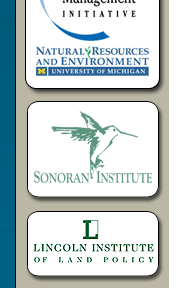The research team compared key experiences and lessons evident across the eight case studies. This comprehensive cross-case analysis, informed by an extensive literature review, provided answers to the following critical questions about collaborative planning on state trust lands:
|
|
- What Makes a Planning Process Collaborative? ( 754 KB PDF): Processes with wide-ranging stakeholder participation, a high degree of internal and external transparency and shared decision-making power were more likely to succeed and produce a durable final agreement. While state trust land agencies cannot abdicate their decision-making authority in these processes, they were able to find ways to share influence over the outcomes of the planning process.
- What Motivates and Sustains a Collaborative Planning Process? (770 KB PDF): A sense of threat, a sense of place, a set of common goals, public pressure, professional or personal interest and a direct financial stake all motivated participation in collaborative processes. We found that career changes and process restrictions were the main barriers to sustaining collaboration. Factors that maintained collaboration included financial incentives, investment in the process, leadership and lack of attractive alternatives.
- What Are the Benefits and Costs of Collaborative Planning? (816 KB PDF): Benefits of collaboration included an increase in the trust land agency’s ability to realize the value of the trust, a higher quality final solution, and greater understanding and public awareness of state trust lands. Costs associated with the process ranged from financial costs to the personal costs associated with the time involved in participating. While benefits and costs were not quantified in each case, the majority of participants interviewed from each case study said they thought the process was successful or that they would collaborate again in the future.
- How Do Internal and External Legal Constraints Influence a Collaborative Planning Process? (787 KB PDF): Internal constraints like the clarity and flexibility of the trust mandate influenced participation, power and group dynamics. External legal factors like federal and state laws established timelines and constraints. In some of the cases, participants used the law strategically to initiate or influence the process, define issues, create options or shape the final outcome. Several participants mentioned that collaborative planning is easier for state trust land agencies than for federal natural resource agencies because trust land agencies have greater flexibility because they lack some of the procedural constraints of federal agencies.
- How Do Agency Structure, Culture and Politics Influence a Collaborative Planning Process? (781 KB PDF): Access to the state land board, changes in agency institutional structure and land commissioner term limitations were some of the structural elements that influenced collaboration. Agency history and culture also influenced the process through traditional behavior that often limited interaction between the trust land agencies and communities and other agencies. In some case, it also caused the agencies to be concerned about abdication of their decision-making power and the efficacy of accepting help from outside sources. Politics affected the process either as a means to gain influence over decision making or to impede or facilitate the process.
- How Is a Collaborative Planning Process Structured To Be Effective? (825 KB PDF): The cases showed that the structure, decision making method and management of the collaborative process are important. Critical process elements include: ensuring that interests were well represented, defining roles and responsibilities or participants in the process, and organizing subcommittees or task forces. Setting ground rules and decision rules, establishing objectives and clear timelines, and coordinating with other governmental processes were also important. Providing time to develop a joint understanding of the problem and the unique character of state trust lands was necessary to ensure that problem-solving was effective.
- What Is the Role of Leadership and Facilitation in a Collaborative Planning Process? (771 KB PDF): Official and unofficial leaders helped guide, inspire or represent others. These leaders often, but not always, benefited the process. Professional or internal facilitators in many cases proved to be invaluable resources that assisted the groups in running meetings, communicating and making decisions.
- How Do Interpersonal and Power Dynamics Influence a Collaborative Planning Process? (778 KB PDF): Positive relationships among stakeholders helped facilitate progress, and provided an incentive to stay involved, fostered respect and built a greater understanding of the issues. Several participants observed that relationships improved through the collaborative planning process. They anticipated that these relationships will help implement the planning outcome and address future resource management issues. Many groups achieved a more even distribution of power through consensus decision making. Power imbalances did arise, but in most cases they did not prevent the groups from achieving their goals.
- How Does A Collaborative Planning Process Incorporate Scientific Information? (722 KB PDF): In many of the cases, scientific and technical information had a significant influence on the process. The process of engaging in joint fact-finding and jointly interpreting scientific information were important in several cases because it strengthened group relationships and increased the perceived legitimacy of information. In some cases, science facilitated informed decision making, while in other cases, a lack of information or uncertainty delayed the process.
|
Elliott State Forest, Oregon
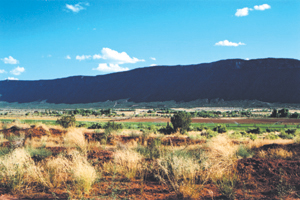
Farm in Castle Valley, Utah
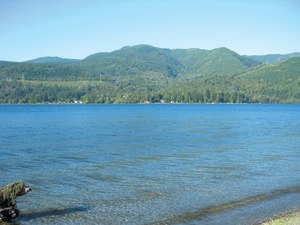
Lake Whatcom, Washington
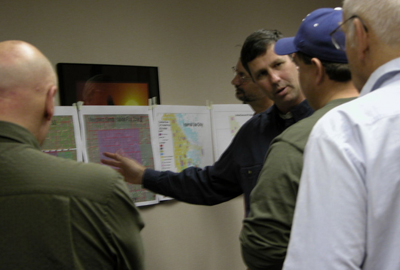
Southeast New Mexico Working Group. Photo by Ric Richardson.
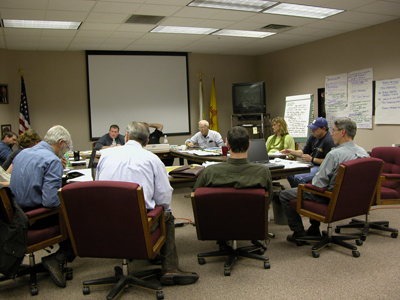
Southeast New Mexico Working Group. Photo by Ric Richardson. |

